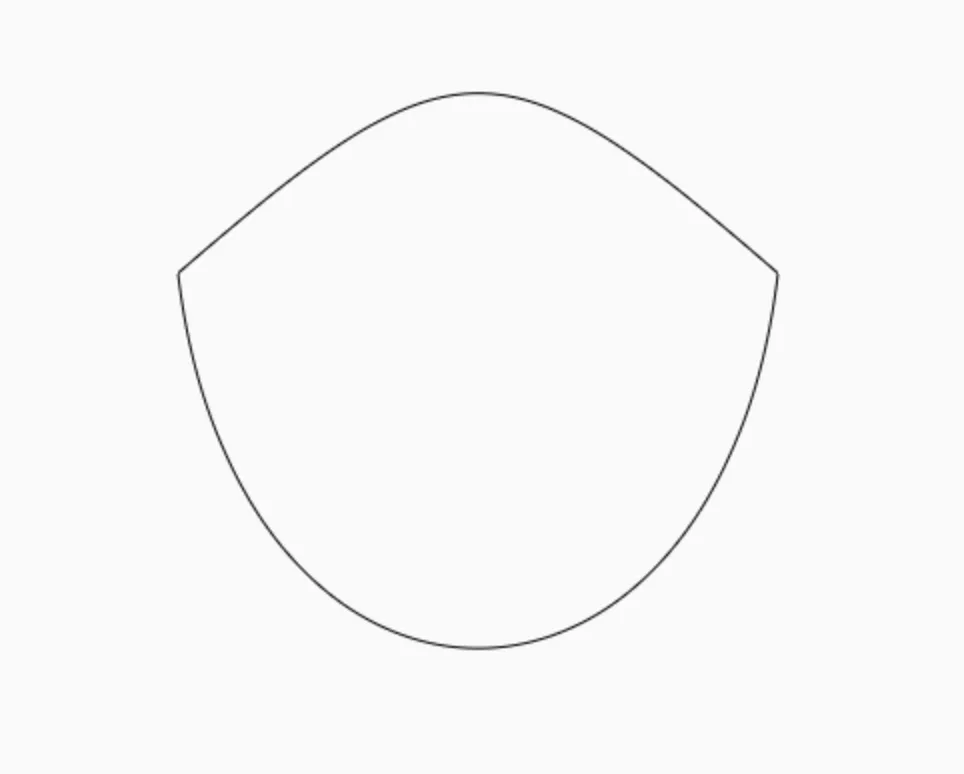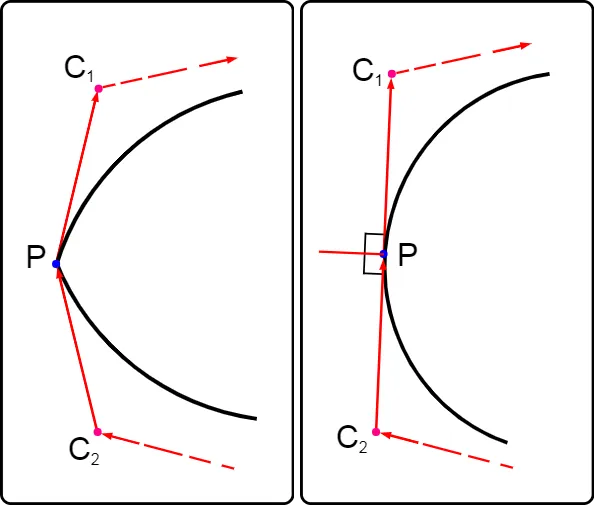我正在尝试将两条分开的贝塞尔曲线连接成一条连续的曲线。目前,我的效果如下:
问题是它们没有连接在一起,因此它们相遇的地方看起来是尖锐的而不是光滑的。我查阅了P5.js中关于连接贝塞尔曲线的文档,但不确定如何将其转化为HTML5 Canvas。如何将这两条贝塞尔曲线连接起来,使它们看起来像一条平滑连续的曲线?
这是我的代码:
const canvas = document.getElementById('canvas');
const c = canvas.getContext("2d");
width = 800;
height = 500;
canvas.width = width;
canvas.height = height;
let face;
let centerX = width / 2;
let centerY = height / 3;
setup();
function setup() {
c.clearRect(0, 0, canvas.width, canvas.height);
face = new Face();
draw();
};
function draw() {
setBackground(`rgba(250, 250, 250, 1)`);
c.beginPath();
c.moveTo(centerX - face.hsx, centerY + face.hsy);
c.bezierCurveTo(centerX - face.hcp1x / 10, centerY - face.hsy2,
centerX + face.hcp1x / 10, centerY - face.hsy2,
centerX + face.hsx, centerY + face.hsy);
c.moveTo(centerX - face.hsx, centerY + face.hsy);
c.bezierCurveTo(centerX - face.hcp1x, centerY + face.hcp1y,
centerX + face.hcp1x, centerY + face.hcp1y,
centerX + face.hsx, centerY + face.hsy);
c.stroke();
c.fillStyle = (`rgba(25, 250, 211, 0)`);
c.fill();
}
function setBackground(color) {
c.fillStyle = color;
c.fillRect(0, 0, width, height);
}
function Face() {
this.hsx = 150;
this.hsy = 0;
this.hsy2 = 120;
this.hcp1x = 120;
this.hcp1y = 250;
}

